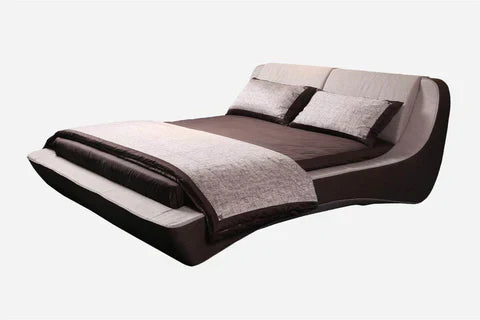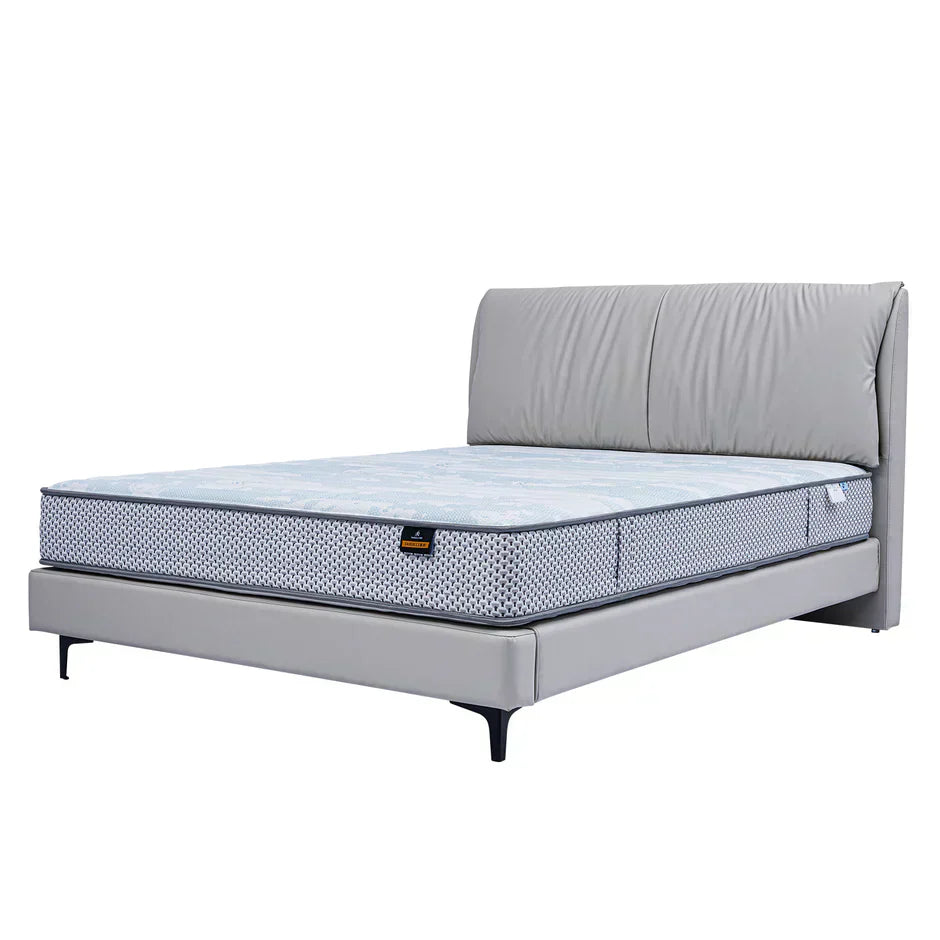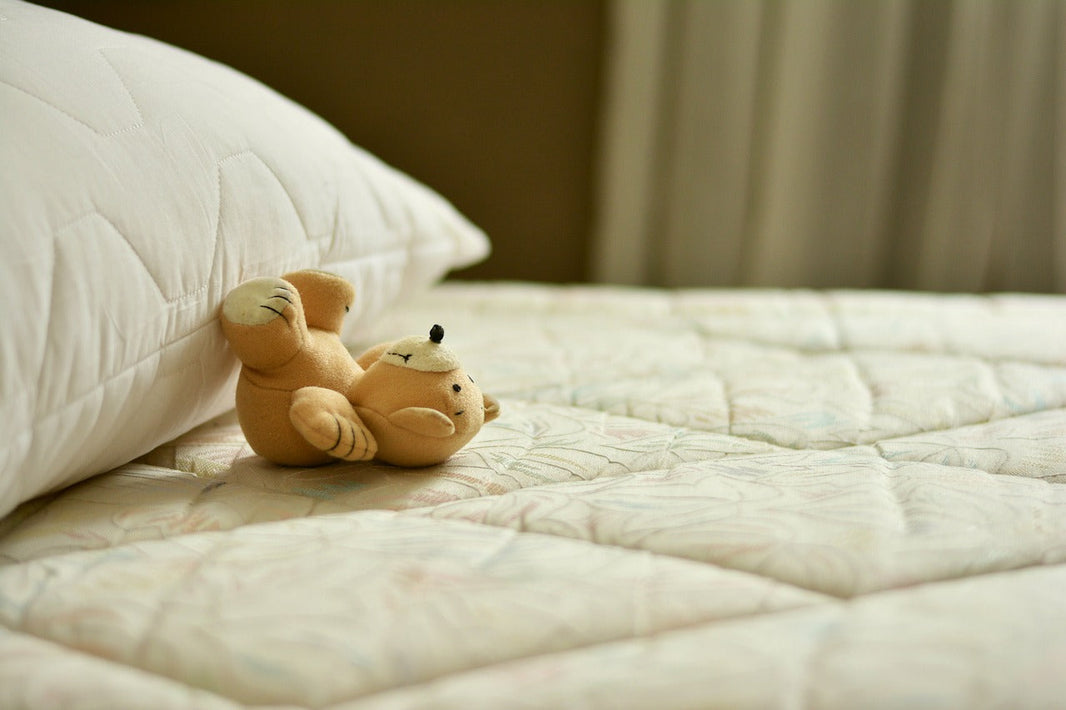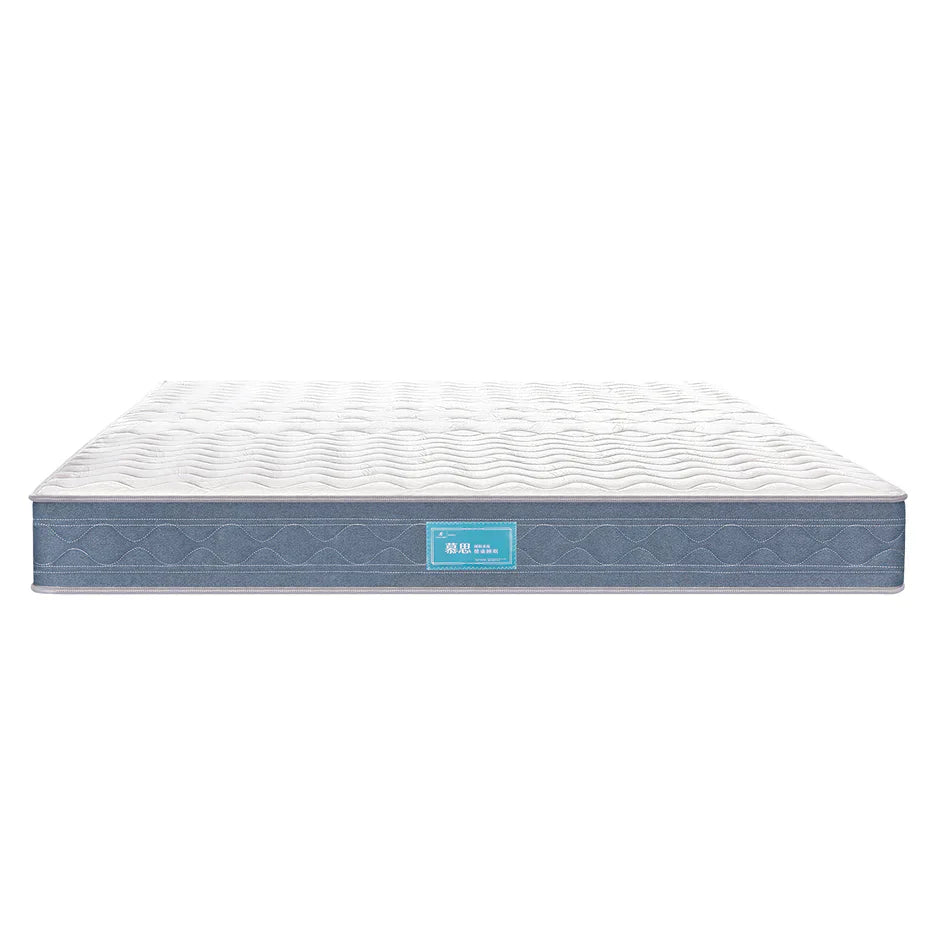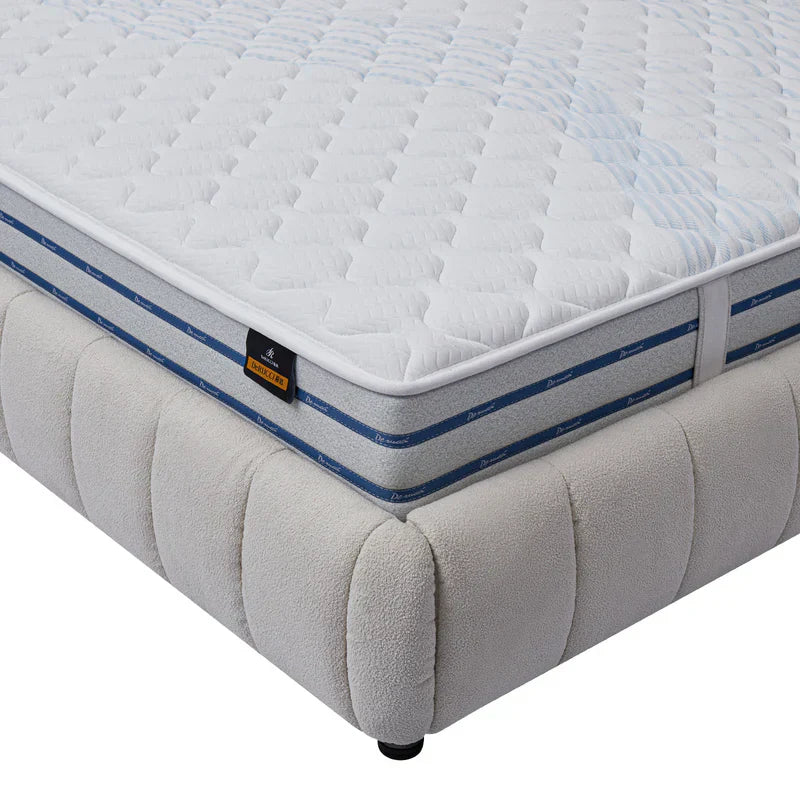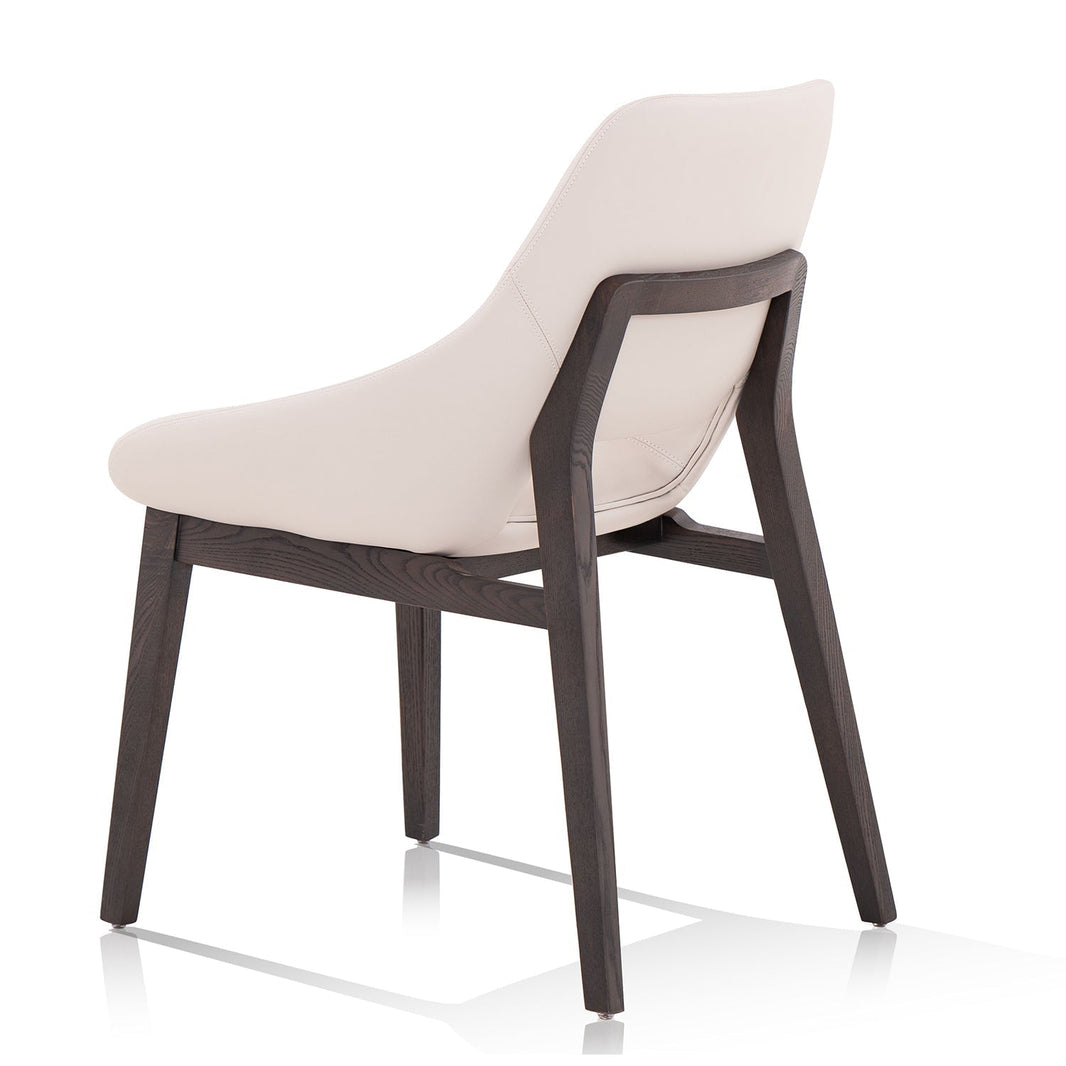Key Takeways
- The right mattress firmness depends on your pain type and sleep position: medium-firm (5-7/10) works best for most back pain sufferers
- Sleep position heavily influences mattress choice: back sleepers need different support than side or stomach sleepers
- Memory foam provides the best pressure relief, while hybrid mattresses offer the most versatile support for various pain types
- Poor mattress support—sagging, too firm/soft, and uneven support—can worsen existing back pain or create new problems
- Temperature control and motion isolation are crucial features that affect how well your back muscles can recover during sleep
Introduction
Back pain can make getting quality sleep a nightmare. Relief begins with what you actually lie on your mattress. The wrong mattress might leave you fitfully tossing and turning, while the right one can mean waking up with much less pain and stiffness. A good mattress matches your body's needs and supports your spine in all the right places. We will cover key features of a mattress, such as firmness levels, support systems, and special materials that help alleviate your back pain and improve sleeping.
Different Types of Back Pain
Back pain isn't one-size-fits-all. You might feel a sharp twinge in your lower back after sitting too long, or wake up with stiff shoulders every morning.
| Type of Back Pain | What It Feels Like |
| Lower Back Pain | That nagging pain right above your tailbone—often worse after sitting or bending over |
| Upper Back Pain | Tension and aches between your shoulder blades |
| Chronic Pain | Pain that sticks around for months and just won't quit |
| Acute Pain | Sudden, sharp pain—maybe from overdoing it at the gym or lifting something heavy |
| Sciatica | Pain that shoots from your back down into your leg |
| Muscle Strain | Sore, tight muscles in specific spots |
Quick Health Note: Before you start mattress shopping, it's really worth checking in with your doctor or physical therapist. They can:
- Tell you what's actually causing your pain
- Point you toward mattress features that could help
- Suggest better sleeping positions
- Make sure there's nothing serious going on with your back
How Poor Mattress Support Makes Back Pain Worse
When your mattress doesn't support you properly, it can make your back pain worse in several ways:
1. Middle Sagging: When your mattress sinks in the middle, your hips drop lower than your head and feet. This creates an unnatural curve in your spine during sleep. You'll notice this happening when you wake up with increased lower back pain and stiffness. The deeper the sag, the more strain it puts on your back muscles throughout the night.
2. Excessive Firmness: A mattress that is too firm allows no give to support your body's curves. Your shoulders and hips cannot sink in when lying on your side, so your spine is often forced to bend. It can often be the cause of morning stiffness and increases in muscle tension.
3. Too Much Softness: A mattress that is too soft allows your body to sink into it too far. The heavier areas of the body (hips and shoulders) sink down while other parts of the body remain higher. This can pull on your back muscles as they try to keep your spine stable.
4. Poor Alignment: When parts of your mattress wear differently, some parts become harder or softer than others, forcing you to sleep in a crooked position. You may feel that you wake up with one side of your back sore, or always trying to change positions to find a comfortable place to lie down.
5. Weak Edge Support: Poor edges in mattresses make one feel like they are standing on quicksand near the bed's edges, which normally translates to sleeping crowded towards the middle when trying to move during sleep. This restricted sleeping space promotes poor sleeping positions and leads to increased muscle tension.
6. Temperature Problems: A mattress that retains too much heat causes restless sleep. You end up moving more often in an effort to find cooler spots, and that excess motion can initiate or increase back pain. Poor sleep due to overheating also reduces the way one's body can recover from daily strain.
Over time, sleeping on a mattress with these problems can turn occasional back discomfort into an ongoing issue. The poor support affects your spine alignment night after night, leading to increased pain and muscle tension.
Key Mattress Features That Help Relieve Back Pain
1. Finding Your Perfect Firmness
The right firmness level directly influences how well your back muscles can relax during sleep. A mattress that is too soft lets your hips sink into it too much, forcing your back muscles to stay on all night just to keep you stable. Too firm, and it causes pressure points that will have you changing positions often, thereby preventing deep, restorative sleep.
Firmness Guide for Back Pain:
- Soft (3-4/10): Helps with upper back pain by allowing shoulders to sink in while supporting the lower back
- Medium (5-6/10): Reduces lower back pain by maintaining spinal alignment while cushioning pressure points
- Firm (7-8/10): Alleviates back pain for stomach sleepers by preventing the lower back from arching
2. Spinal Alignment Support
Proper spinal alignment during sleep allows tense back muscles to fully relax and recover. A mattress with targeted zones provides:
- Extra support under the heaviest parts of your body (hips and shoulders)
- Enhanced lumbar support to maintain the natural curve of your lower back
- Balanced support across your entire spine to prevent muscle strain
3. Pressure Relief Technology
When a mattress effectively relieves pressure points, it:
- Reduces the need to change positions frequently during sleep
- Allows muscles around the spine to fully relax
- Promotes better blood circulation to tense back muscles
- Prevents pressure buildup that can cause morning stiffness
4. Temperature Control
Proper temperature regulation helps back pain by:
- Reducing muscle tension that often increases with overheating
- Promoting deeper sleep cycles when your back muscles can properly recover
- Preventing excessive movement caused by temperature discomfort
- Supporting sustained muscle relaxation throughout the night
5. Motion Isolation
Good motion isolation helps back pain recovery by:
- Preventing sudden movements that can jar sore back muscles
- Maintaining consistent spinal alignment even when your sleep partner moves
- Reducing the number of times your back needs to readjust during sleep
- Allowing you to stay in proper alignment when changing positions
6. Edge Support
Strong edge support aids back pain management by:
- Providing stable support when getting in and out of bed, reducing strain on back muscles
- Allowing you to use the entire mattress surface while maintaining proper alignment
- Offering a stable surface for sitting without compromising support
- Creating consistent support across the entire sleep surface
Best Mattress Materials for Back Pain
| Material Type | Key Benefits | Best For Back Pain Relief | Drawbacks |
| Memory Foam |
|
|
|
| Latex |
|
|
|
| Hybrid |
|
|
|
| Innerspring |
|
|
|
| Smart Airbed |
|
|
|

Memory Foam
When to Choose:
- If you have persistent pressure points in your back, shoulders, or hips
- For those who need deep contouring around the lower back
- If you share a bed and need excellent motion isolation
- When you prefer to feel "cradled" rather than sleeping "on top" of the mattress
Latex
When to Choose:
- If you want a mattress that's naturally cooling and antimicrobial
- For those who need quick response time when changing positions
- When you're looking for an eco-friendly option that's highly durable
- If you want balanced support without the "sinking" feeling of memory foam
Hybrid
When to Choose:
- If you need both pressure relief and strong support
- When you want the benefits of foam but don't want to feel stuck
- For couples who have different firmness preferences
- If you sleep hot but still want good pressure relief
Innerspring
When to Choose:
- If you need a highly breathable mattress that sleeps cool
- When strong edge support is a priority for getting in and out of bed
- For those who prefer a more traditional, bouncy feel
- If you're on a tighter budget but still need good support

Smart Airbed
When to Choose:
- If your back pain varies significantly from day to day
- When you and your partner have very different support needs
- For those who need to adjust firmness levels during recovery periods
- If you want to fine-tune your support level precisely
Back Pain and Sleep Position: How to Choose Your Mattress
Your sleep position directly affects how your spine aligns during rest. The right mattress should support your natural sleeping position while maintaining proper spinal alignment.
| Sleep Position | Recommended Support | Mattress Features | Pain Relief Focus |
| Back Sleeping |
Medium to Medium-Firm (5-7/10 firmness) |
|
|
| Side Sleeping |
Medium to Medium-Soft (4-6/10 firmness) |
|
|
| Stomach Sleeping |
Medium-Firm to Firm (6-8/10 firmness) |
|
|
| Combination Sleeping |
Medium (5-6/10 firmness) |
|
|
Back Sleeping
Best Mattress Choices:
- If you're a dedicated back sleeper, choose a medium-firm mattress with enhanced lumbar support
- For lower back pain, look for zoned support that's firmer under the lumbar region
- When you have upper back pain, ensure the shoulder area has enough give
- If you snore, consider an adjustable base compatible mattress
Side Sleeping
- For hip pain, choose a mattress with deeper pressure relief in the hip area
- If you have shoulder pain, look for softer upper layers that allow shoulder sinking
- When you experience lower back pain, ensure the mattress keeps your spine straight
- For those who switch sides, choose a responsive material that allows easy movement
Stomach Sleeping
Best Mattress Choices:
- If you're a strict stomach sleeper, prioritize firmer support to prevent hip sinking
- When you have neck pain, ensure the mattress is firm enough to prevent arching
- For lower back issues, look for reinforced support in the hip area
- If you're heavier, choose extra firm support to maintain neutral spine alignment
Combination Sleeping
Best Mattress Choices:
- If you change positions frequently, choose a responsive material like latex or hybrid
- When you sleep in multiple positions, look for medium firmness with good pressure relief
- For those who move a lot, ensure the mattress has good temperature regulation
- If you switch between back and side sleeping, prioritize balanced support with some conforming

Choosing the Right Mattress for the Relief of Your Back Pain
While no single mattress works for everyone with back pain, understanding your specific needs—from sleep position to pain patterns—helps narrow down your options. First, identify your type of back pain, then focus on key features—support, firmness, and pressure relief—that match your requirements.
A full sleep setup, including proper pillows to support and a bed base, is important in the relief of back pain. With the right mattress and sleep setup, you can work your way up to better sleep and less back pain.


